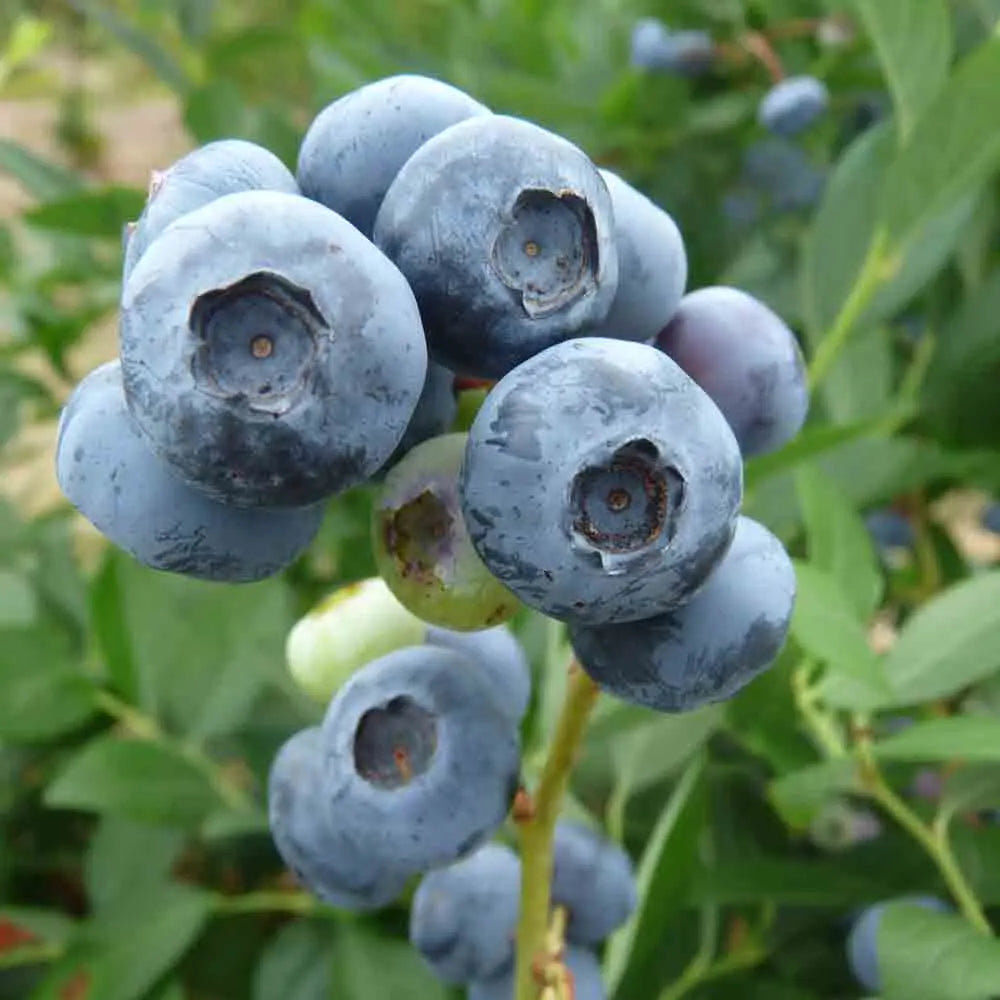BLUEBERRY SHRUB AB
Vaccinium corymbosum
The blueberry bush is a shrub variety about 1.5 m high, flowering in spring and then producing clusters of blue berries with green flesh that can be used fresh, in jams, compotes, juices, sorbets, and pastries.
How to successfully sow blueberries
Sowing possible in autumn, in open ground in rich, slightly acidic soil, in a partially shaded position or in a terrine placed outside.
Also sow in March, in this case in February, soak your seeds for 24 hours, place them in the fridge for 5-6 weeks, then sow them in March in a terrine in a peaty mixture then placed at 20°C. Germination takes 20 to 30 days.
Transplant into a pot at the 4 to 5 leaf stage.
Grow in pots for 1 year to allow the plants to develop before planting in the ground.
Planting blueberries
After a year in a pot, plant the young plants in April - May or in autumn outside of frost periods in all types of soil except limestone because it is a heather soil or acidophilic shrub. If the soil is not acidic, we advise you to add heather soil before planting.
Blueberry prefers moist but well-drained soil in partial shade to full sun. Plant several plants in the same area to encourage pollination.
Weed carefully and loosen the soil to a depth of about twenty centimetres.
Make a hole twice as large as the root ball in a sunny location.
Repot the blueberry bush.
Place the plant in its hole, lightly burying the top of the root ball.
To bury the root ball, you need a mixture of garden soil (extracted from the hole) and compost (1/3) and heather soil (2/3).
This ratio is important for the plant to be able to establish itself there.
Pack down and water generously, then cover with plant mulch (BRF, pine bark) to keep it cool and maintain the acidity of the soil.
It is also interesting to add peat or heather soil each year to maintain acidity.
Culture
The first year you can remove the flower buds to encourage the plant to grow.
Harvest
The fruits are harvested in July.







